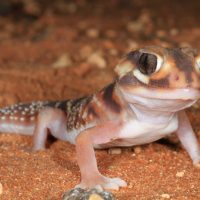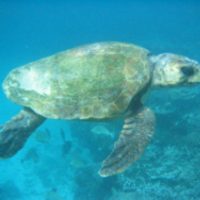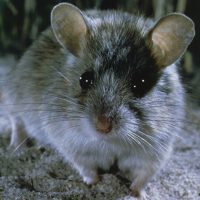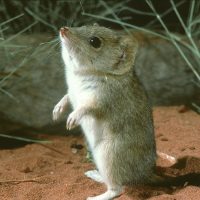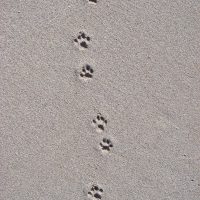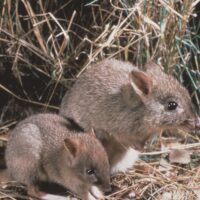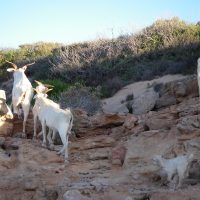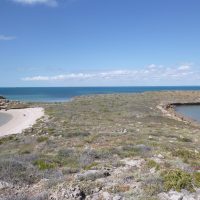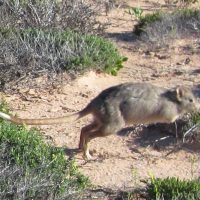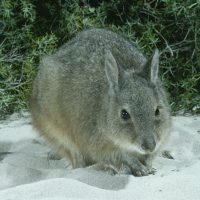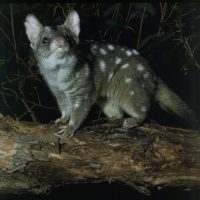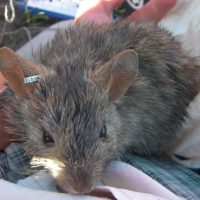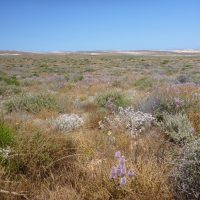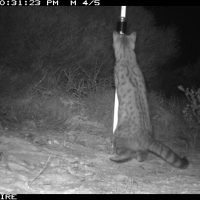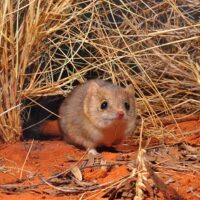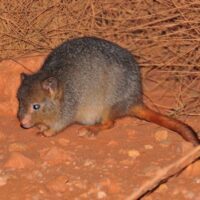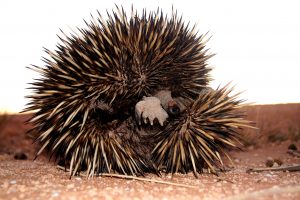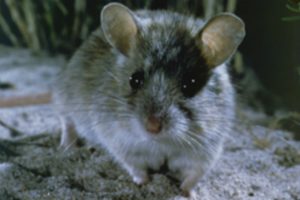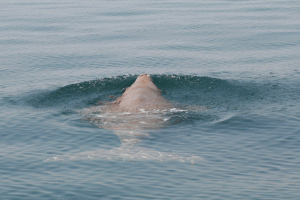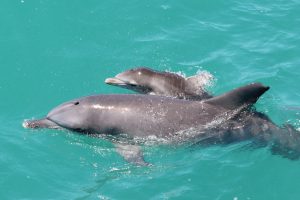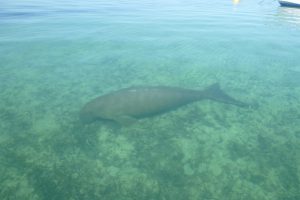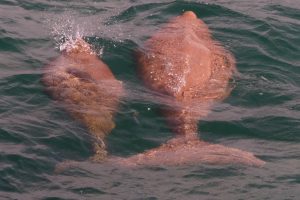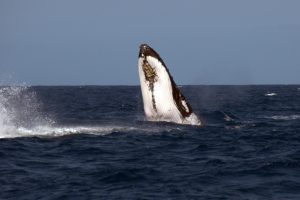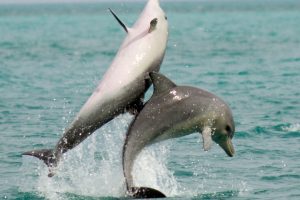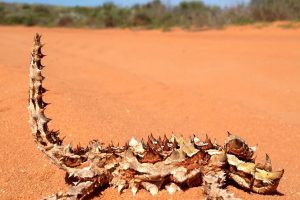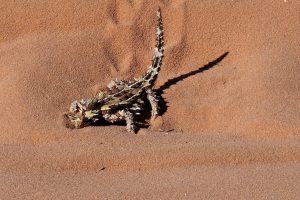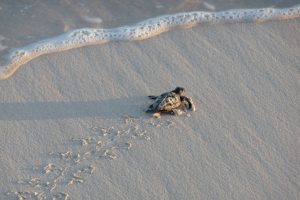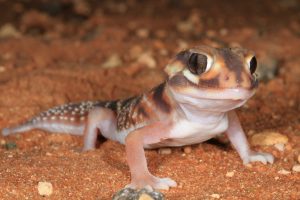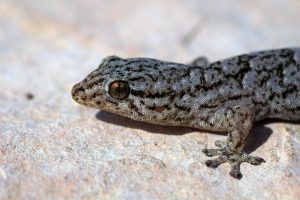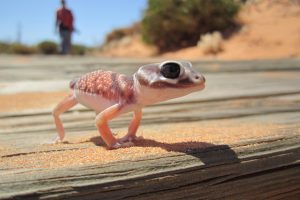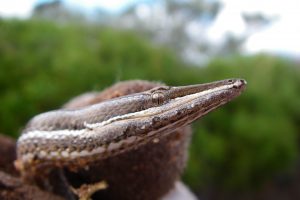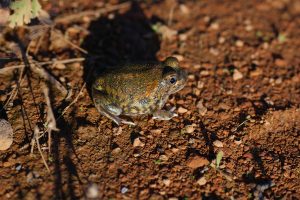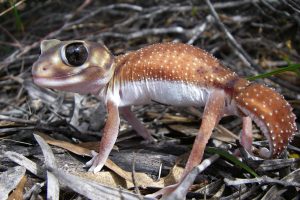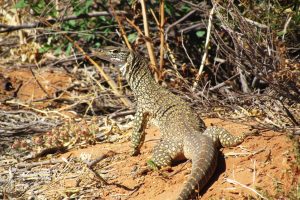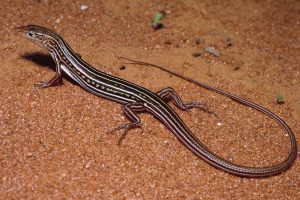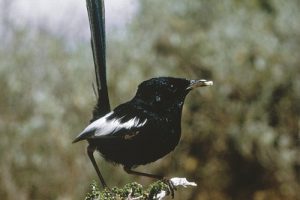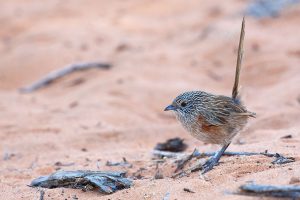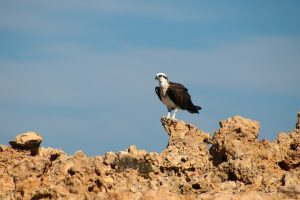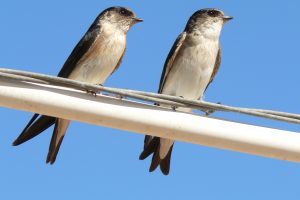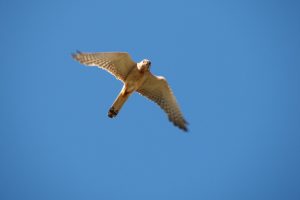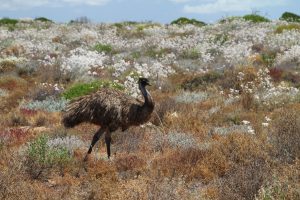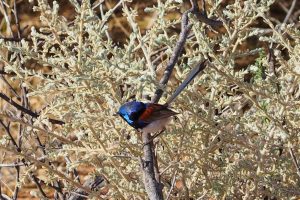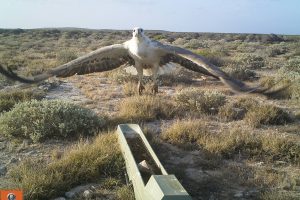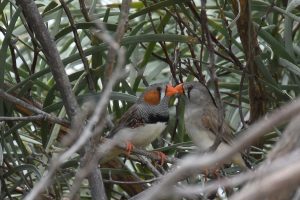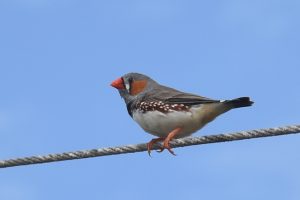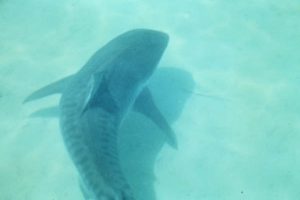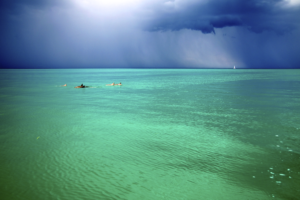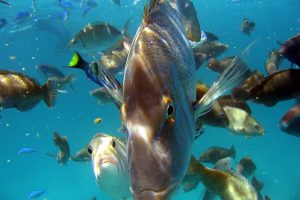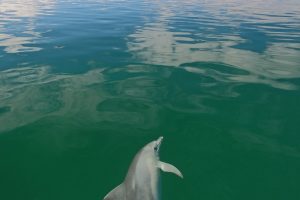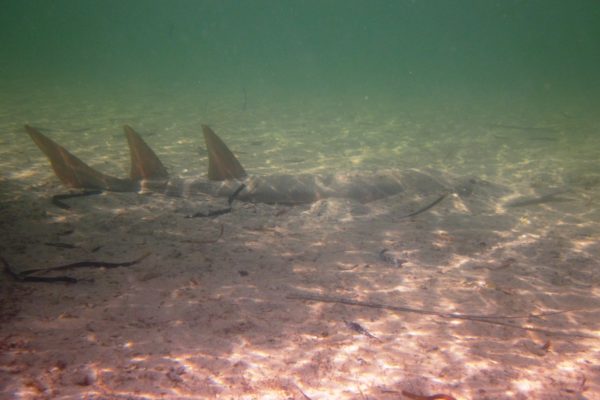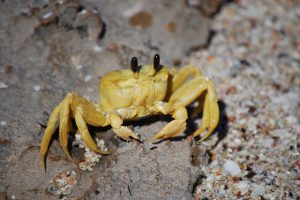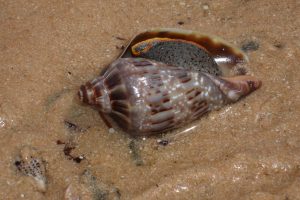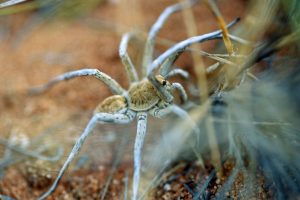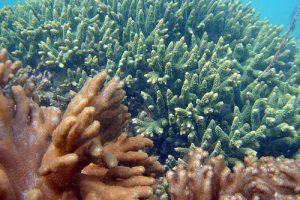Animals of Shark Bay
Shark Bay is home to more than 100 species of reptiles and amphibians, 240 species of bird, 320 species of fish and more than 80 coral and 218 bivalve species. It is also an important place for migratory species including shorebirds from the Northern Hemisphere and humpback whales.
It is a safe haven for some of the world’s most endangered species, including the loggerhead turtle, green turtle, dugong and four mammal species not found in the wild anywhere else.
Dugongs (Dugong dugon) and Indo-Pacific bottlenose dolphins (Tursiops aduncus) reside in the waters of Shark Bay while humpback whales (Megaptera novaeangliae) visit each year. Bernier, Dorre, Salutation and Faure islands are already important for terrestrial mammals while Dirk Hartog Island is on the verge of becoming a refuge for 12 species.
Bernier Island has the only natural wild population of the Shark Bay mouse (Pseudomys fieldi). Bernier and Dorre islands are home to the only natural wild populations of the Shark Bay bandicoot (Perameles bougainville), banded hare-wallaby (Lagostrophus fasciatus), and rufous hare-wallaby (Lagorchestes hirsutus). The survival of boodies (Bettongia lesueur) is also dependent on Bernier and Dorre islands even though they are found elsewhere. Dorre Island is one of only two islands where Shark Bay bandicoots are free of a papilloma virus.
A translocated population of greater stick-nest rats (Leporillus conditor) is thriving on Salutation Island and Faure Island is home to a number of translocated species – boodie, banded hare wallaby, Shark Bay bandicoot and Shark Bay mouse. Peron Peninsula hosts a reintroduced population of bilbies (Macrotis lagotis).
Since feral cats and goats were declared eradicated in 2018, Dirk Hartog Island has been receiving translocated species and has become a refuge for rufous and banded hare-wallabies, dibblers (Parantechinus apicalis) and Shark Bay bandicoots. Future translocations include Chuditch (Dasyurus geoffroii), mulgara (Dasycercus blythi), greater stick-nest rats, desert mouse (Pseudomys desertor), Shark Bay mouse, heath mouse (Pseudomys shortridgei), woylie (Bettongia pencilliata), western grasswrens (Amytornis textilis) and boodies (Bettongia lesueur).
Shark Bay World Heritage Area is home to at least 100 species of reptile and amphibian. One-third of Australia’s dragon lizard species live here along with three species of sand swimming skinks found nowhere else. Many species are at the northern or southern limit of their range while others are new to science.
Goannas, legless lizards and geckos are abundant, and snakes such as the woma python (Aspidites ramsayi), gwardar (Pseudonaja nuchalis) and mulga (Pseudechis australis) are active in summer.
Shark Bay’s marine environment is also habitat for reptiles, including six species of sea snake and a population of over 6,000 marine turtles. It is an important breeding site for the endangered loggerhead turtle (Caretta caretta). Green turtles (Chelonia mydas) are commonly seen in sheltered inlets.
More than 240 bird species are found in Shark Bay, about 35% of Australia’s bird species. They range from the 10-cm zebra finch to the six-foot emu; from the squeaky reel of the thick-billed grasswren to the haunting notes of the chiming wedgebill. The common greenshank flies 12,000 km between Shark Bay and Siberia while the Dorre Island rufous fieldwren occurs nowhere else.
Each spring more than 65 species visit during their migration from the northern hemisphere while osprey, pelicans and other seabirds remain here year-round. Shark Bay is at the northern limit of the regent parrot’s range and Peron Peninsula is a refuge for a translocated malleefowl population.
Whether you’re looking for wrens or raptors, cormorants or cockatoos, birdwatchers will not be disappointed.
Shark Bay is home to a diverse range of marine life. This meeting place of warm waters from the north and cooler waters from the south provides the best of both worlds for tropical and temperate species.
More than 320 fish species live here, from emperors and angel fish to remoras and wrasse. Recreational fishers come to battle Spanish mackerel, tailor and kingfish, while commercial fishers harvest whiting, mullet and snapper. Divers delight in parrotfish, damselfish and other tropical species winding through the water in a kaleidoscope of colour and form.
There is a reason why Shark Bay is so called. “Sharks we caught a great many of, which our men eat very savourily,” wrote English explorer William Dampier in 1699. “Among them we caught one which was 11 feet long.” Dampier named the place “Shark’s Bay” in honour of these magnificent fish.
At least 28 shark species live in Shark Bay and some can be spotted from lookouts at Eagle Bluff and Skipjack Point, especially during summer.
Some of the more common sharks and rays:
Tiger shark (Galeocerdo cuvier)
Western wobbegong (Orectolobus hutchinsi)
Spotted wobbegong (Orectolobus maculatus)
Banded wobbegong (Orectolobus halei)
Grey carpet shark (Chiloscyllium punctatum)
Epaulette shark (Hemiscyllium ocellatum)
Zebra shark (Stegastoma fasciatum)
Whale shark (Rhincodon typus)
Grey nurse shark (Carcharias taurus)
White shark (Carcharodon carcharias)
Shortfin mako (Isurus oxyrinchus)
Whiskery shark (Furgaleus macki)
Pencil shark (Hypogaleus hyugaensis)
Weasel shark (Hemigaleus microstoma)
Fossil shark (Hemipristis elongata)
Spinner shark (Carcharhinus brevipinna)
Nervous shark (Carcharhinus cautus)
Whitecheek shark (Carcharhinus dussumieri)
Bull shark (Carcharhinus leucas)
Blacktip reef shark (Carcharhinus melanopterus)
Dusky shark (Carcharhinus obscurus)
Sandbar shark (Carcharhinus plumbeus)
Lemon shark (Negaprion acutidens)
Milk shark (Rhizoprionodon acutus)
Whitetip reef shark (Triaenodon obesus)
Scalloped hammerhead (Sphyrna zygaena)
Great hammerhead (Sphyrna mokarran)
Smooth hammerhead (Sphyrna zygaena)
Other species likely to occur in Shark Bay:
Creek whaler (Carcharhinus fitzroyensis)
Tawny nurse shark (Nebrius ferrugineus)
Common blacktip shark (Carcharhinus limbatus)
Grey reef shark (Carcharhinus amblyrhynchos)
Pigeye shark (Carcharhinus amboinensis)
Silvertip shark (Carcharhinus albimarginatus)
Rays are closely related to sharks and six common species in Shark Bay are:
Manta ray (Manta birostris)
Spotted eagle ray (Aetobatus narinari)
Western round skate (Irolita sp.)
Blue-spotted stingray (Dasyatis kuhlii)
Black stingray (Dasyatis thetidis)
Cowtail stingray (Pastinachus sephen)
The Shovel-Nose ray looks like a shark, but with its mouth on the underside of its head, is considered a ray. They can grow up to 2.7 metres long and are often seen lying in the sandy shallows.
Invertebrates abound on land and in the water in Shark Bay. Surveys of spiders, centipedes and millipedes suggest the diversity of invertebrates is high. In one survey 169 species of ground spider and 34 trapdoor spiders were found. Seventeen species of millipedes and centipedes have also been recorded.
Divers can seek 80 or more coral species around Dirk Hartog, Bernier and Dorre islands, and in the South Passage. Hard corals include vase, plate and brain corals and a great variety of colourful staghorn species. Soft corals, nudibranchs, anemones, brittle stars and cowries nestle among sponges on reefs.
Banana prawns, brown tiger prawns and western king prawns are all found in the region and support a significant prawn fishery. Scallops, squid and lobsters are also important to commercial and recreational fishers. Pearl oysters are cultured and farmed.
Intertidal flats and shores support thriving communities of crabs and snails while sandy shallows are home to at least 218 bivalve species. The area’s best-known bivalve is the Hamelin or Fragum cockle, Fragum erugatum.

